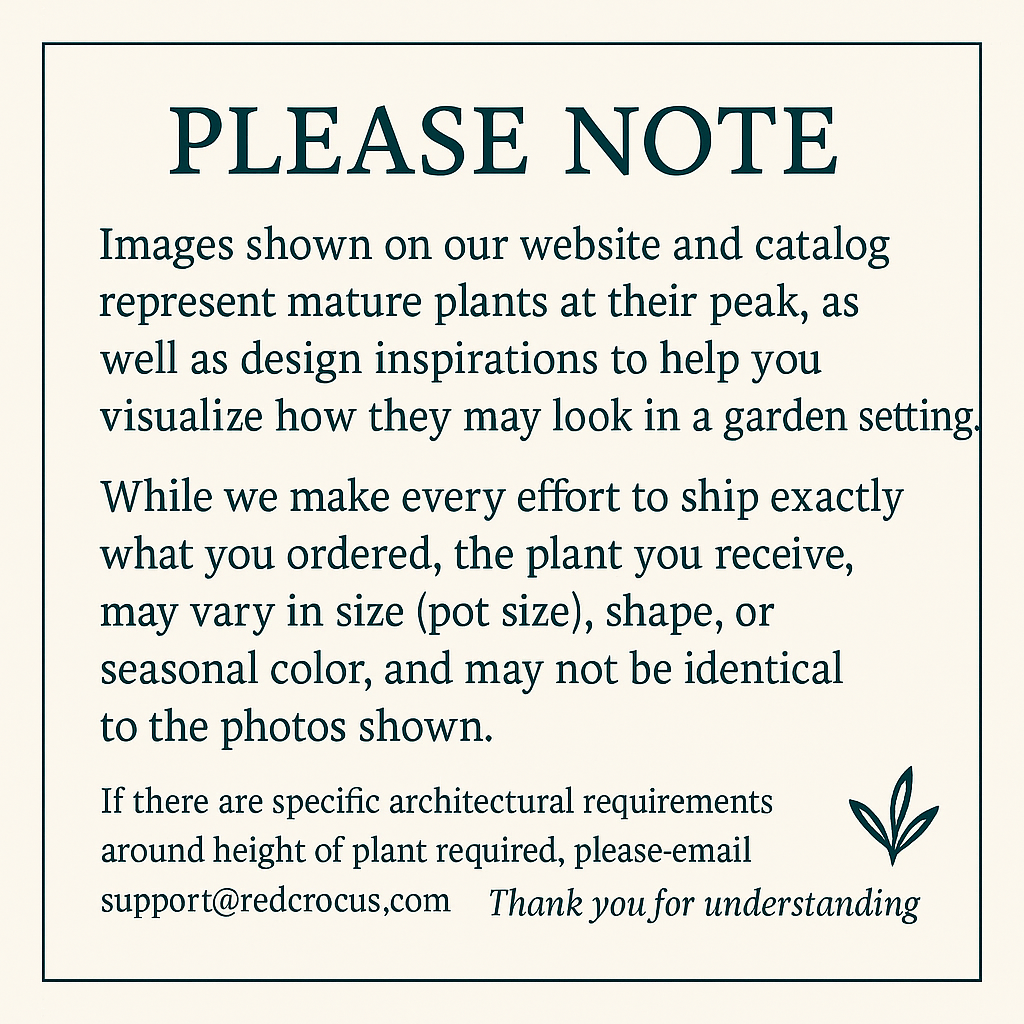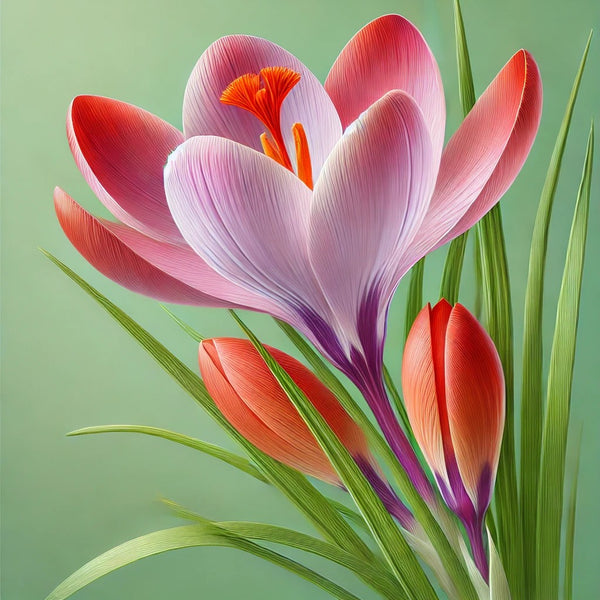1
/
of
25
Weeping Blue Atlas Cedar–Glauca Pendula–Unique evergreen conifer 10 Gallon
Weeping Blue Atlas Cedar–Glauca Pendula–Unique evergreen conifer 10 Gallon
Regular price
$512.00 USD
Regular price
$665.60 USD
Sale price
$512.00 USD
Unit price
/
per
Shipping calculated at checkout.
SKU:nte5474-redcrocus
Couldn't load pickup availability
Cedrus atlantica 'Glauca Pendula' Serpentine
Description
The Cedrus atlantica 'Glauca Pendula' Serpentine, commonly known as the Weeping Blue Atlas Cedar, is a unique and striking evergreen conifer. It is characterized by its cascading, serpentine branches and silvery-blue needle-like foliage. This plant is often used as a focal point in gardens due to its dramatic form and color.
Suggested Uses
This plant is ideal for use as a specimen tree in large gardens or landscapes. It can also be trained over arbors or trellises to create a stunning visual effect. Its unique form makes it a great choice for adding architectural interest to a garden.
Plant Details
-
 Botanical Name: Cedrus atlantica 'Glauca Pendula' Serpentine
Botanical Name: Cedrus atlantica 'Glauca Pendula' Serpentine -
 Common Name: Weeping Blue Atlas Cedar
Common Name: Weeping Blue Atlas Cedar -
 Size & Growth: Typically grows to 10-15 feet tall with a spread of 6-10 feet
Size & Growth: Typically grows to 10-15 feet tall with a spread of 6-10 feet -
 Hardiness Zones: 6-9
Hardiness Zones: 6-9 -
 Foliage Type: Evergreen
Foliage Type: Evergreen -
 Bloom Time: Non-flowering
Bloom Time: Non-flowering -
 Growth Rate: Slow to moderate
Growth Rate: Slow to moderate -
 Light Requirements: Full sun
Light Requirements: Full sun -
 Attracts Pollinators: No
Attracts Pollinators: No -
 Indoor Friendly: No
Indoor Friendly: No -
 Container Friendly: Yes, when young
Container Friendly: Yes, when young -
 Deer Resistant: Yes
Deer Resistant: Yes -
 Pet Warning: Non-toxic
Pet Warning: Non-toxic -
 Fragrant: No
Fragrant: No -
 Cut Flower: No
Cut Flower: No -
 Grows Well With: Other conifers and ornamental grasses
Grows Well With: Other conifers and ornamental grasses
Care Tips
-
 Planting Instructions: Plant in well-drained soil in a location with full sun exposure
Planting Instructions: Plant in well-drained soil in a location with full sun exposure -
 Soil Moisture: Keep soil moderately moist, but not waterlogged
Soil Moisture: Keep soil moderately moist, but not waterlogged -
 Soil Type: Prefers sandy, loamy, or clay soils
Soil Type: Prefers sandy, loamy, or clay soils -
 Humidity: Tolerates average humidity levels
Humidity: Tolerates average humidity levels -
 Pruning Instructions: Prune to shape in late winter or early spring
Pruning Instructions: Prune to shape in late winter or early spring -
 Winter Care: Mulch around the base to protect roots in colder climates
Winter Care: Mulch around the base to protect roots in colder climates -
 Planting Depth: Plant at the same depth as in the nursery container
Planting Depth: Plant at the same depth as in the nursery container -
 Fertilization: Fertilize in spring with a balanced fertilizer
Fertilization: Fertilize in spring with a balanced fertilizer -
 Special Care: Stake young plants to encourage upright growth
Special Care: Stake young plants to encourage upright growth
Share


















































